Batman (serial)
6.6 /10 1 Votes
Duration Language English | 6.6/10 IMDb Genre Action, Adventure, Crime Country United States | |||||||||||||||||||||||||||||||||
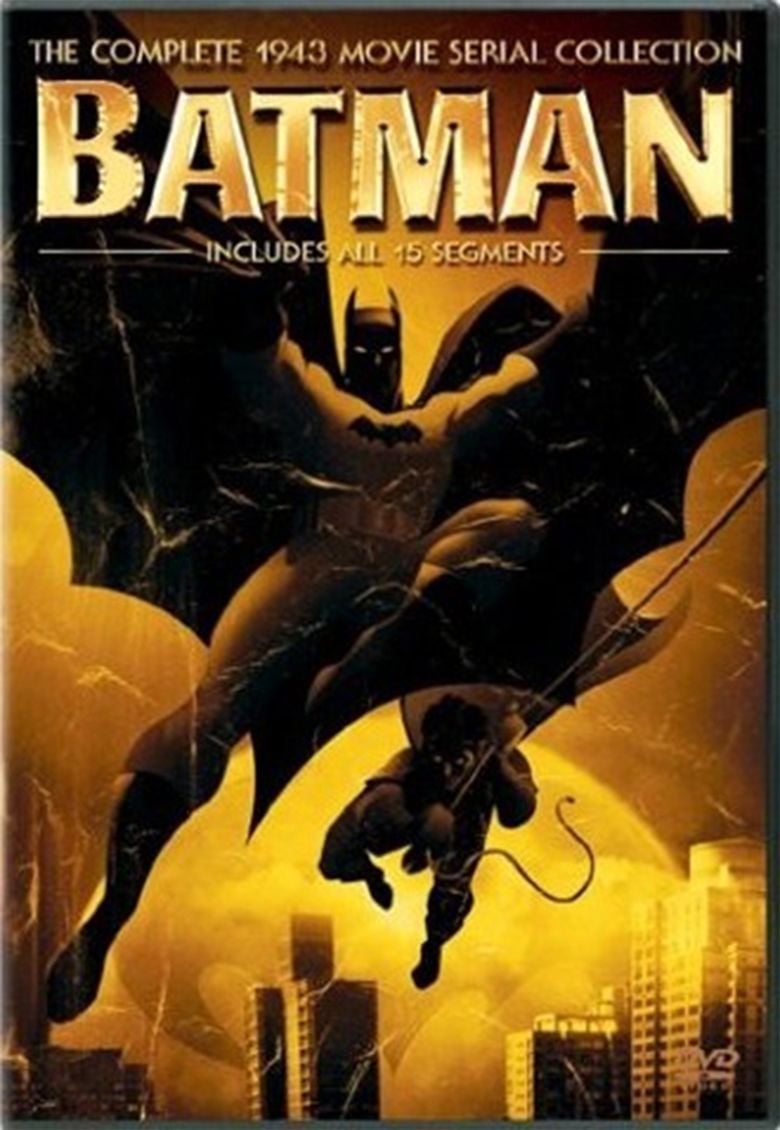 | ||||||||||||||||||||||||||||||||||
Release date July 16, 1943 (1943-07-16) Based on Characters by Bob KaneBill Finger Writer Bob Kane (comic books created by), Victor McLeod (screenplay), Leslie Swabacker (screenplay), Harry L. Fraser (screenplay) Cast (Batman / Bruce Wayne), (Robin / Dick Grayson), J. Carrol Naish (Dr. Tito Daka / Prince Daka), (Linda Page), (Alfred), Knox Manning (Narrator)Similar movies Tagline A HUNDRED TIMES MORE THRILLING ON THE SCREEN! | ||||||||||||||||||||||||||||||||||
The batman 1945 movie trailer
Batman is a 1943 black-and-white 15-chapter theatrical serial from Columbia Pictures, produced by Rudolph C. Flothow, directed by Lambert Hillyer. The serial is based on the DC Comics character Batman, who first appeared in Detective Comics #27 in May 1939. It stars Lewis Wilson as Batman and Douglas Croft as his sidekick Robin. The villain is an original character named Dr. Daka, a secret agent of the Japanese Imperial government, played by J. Carrol Naish. Rounding out the cast are Shirley Patterson as Linda Page, Bruce Wayne's love interest, and William Austin as Alfred, the Wayne Manor butler.
Contents
- The batman 1945 movie trailer
- Plot
- Chapter titles
- Cast
- Production
- Theatrical
- Home media
- Television
- Critical reception
- Influence
- References
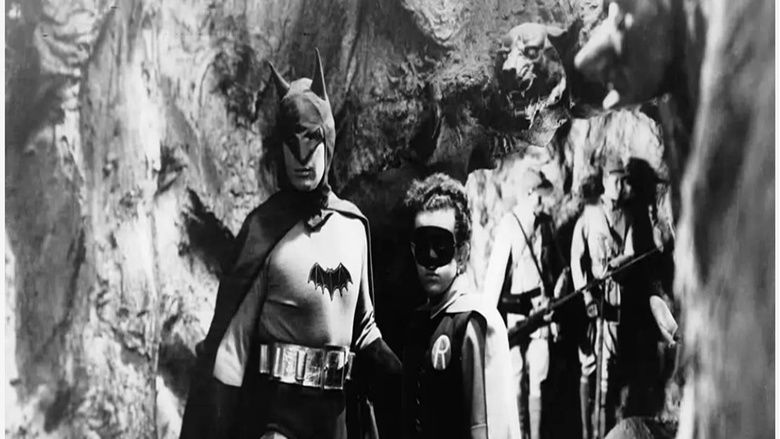
The serial's storyline involves the Batman, a secret U. S. government agent, attempting to defeat the sabotage schemes of Japanese agent Dr. Daka operating in Gotham City at the height of World War II. Serving Daka are his traitorous American henchmen.
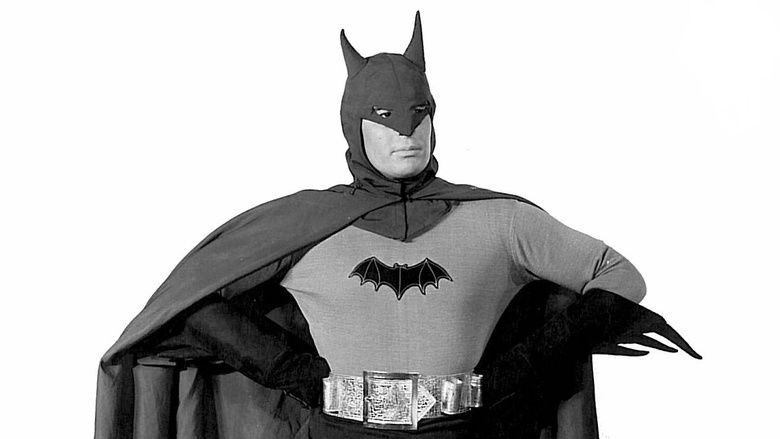
Batman is notable for being the first appearance on film of Batman and for debuting serial story details that quickly became permanent parts of the Batman comic's mythos: the Bat's Cave and its secret entrance through a grandfather clock inside Wayne Manor. The serial also changed the course of how Alfred Pennyworth's physical appearance was depicted in Batman stories. At the time Batman was released in theaters, Alfred was a portly gentleman in the comics. Subsequent issues suddenly portrayed Alfred as trim and sporting a thin mustache, following actor William Austin's portrayal.
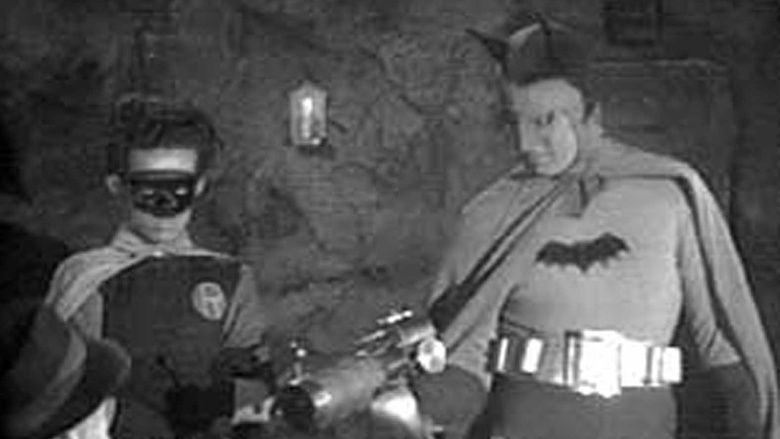
The serial was commercially successful and in 1949, four years after World War II, spawned another Columbia chapter serial, Batman and Robin. The entire first Batman serial was re-released theatrically in 1965 as An Evening with Batman and Robin, and proved very popular. (Some theatres showed the chapters as a Saturday matinee.) Its success inspired the action-comedy lampoon series Batman (and its 1966 theatrical feature film spin-off) starring Adam West and Burt Ward.
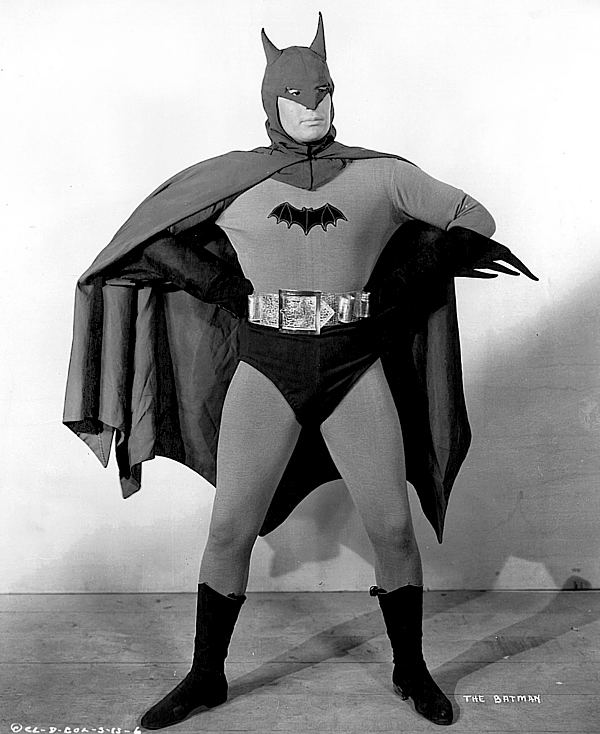
Plot
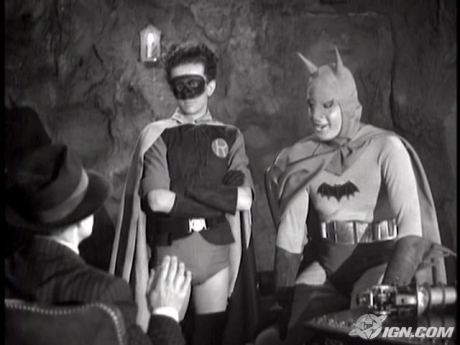
The Batman/Bruce Wayne (Lewis Wilson), and his ward, Robin/Dick Grayson (Douglas Croft), secret government agents following the Japanese attack on Pearl Harbor, become aware of a Japanese sabotage ring operating in Gotham City. Bruce's girl friend Linda Page (Shirley Patterson) asks for his help in finding her uncle, Martin Warren (Gus Glassmire), who was abducted by the ring after he was released from prison.
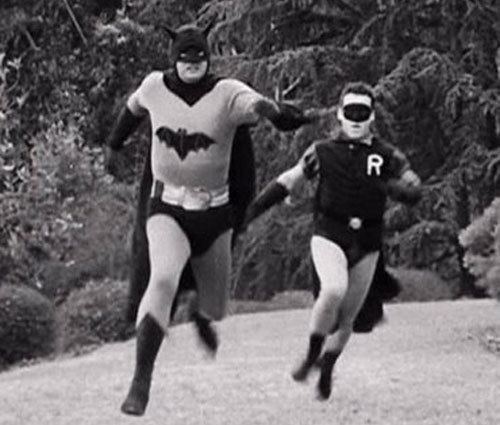
Dr. Tito Daka (J. Carrol Naish), the Japanese leader of the ring, plans to steal the city's radium supply to power his invention, a hand-held raygun that can dissolve anything hit by its powerful beam. He forces from Warren the location of the vault where the radium is stored. Daka sends his American henchmen, along with a zombie that he controls by microphone via an electronic brain implant, to steal the precious metal. Batman discovers the plot and eventually routs the gang after a terrific battle.
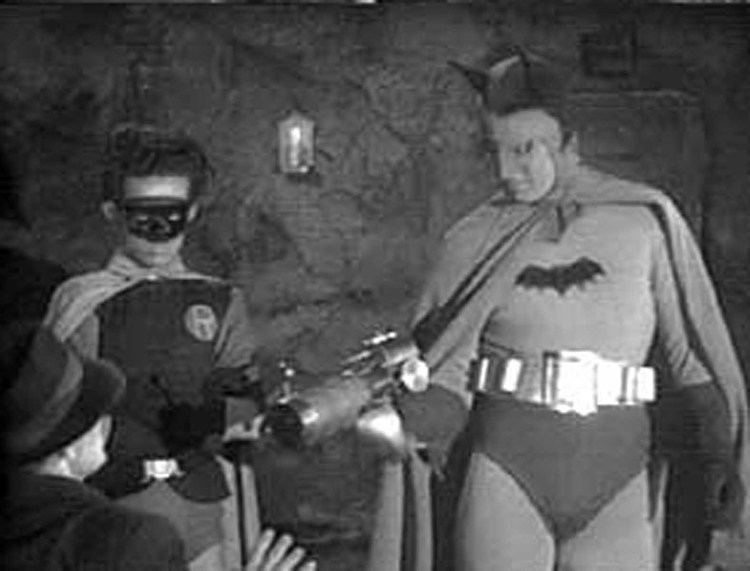
In his secret underground bat's cave, the Batman interrogates one of Daka's henchmen, who reveals the radium was to have been taken to The House of the Open Door, located in the mostly deserted "Little Tokyo" section of Gotham City. Batman and Robin infiltrate the gang's lair (also Dr. Daka's laboratory), hidden inside a still-open business, a Fun House ride. There, they find Linda bound, gagged, and unconscious. After she is rescued by the Dynamic Duo, Daka transforms her uncle Warren into a zombie, and plots the derailment of a heavily laden supply train. Once again, Dr. Daka's sabotage efforts are stopped by the Batman and Robin.
Traps and counter-traps follow with breath-taking rapidity in the chapters that follow, as the Dynamic Duo continue to thwart the plans of the Japanese agent and his henchmen. When Dr. Daka attempts to steal America's Victory Plans, the Batman and Robin finally prevail. They oversee the capture of Daka's men and finally the destruction of the Japanese agent as he tries to escape and falls through his own hidden trapdoor into an underground pit of hungry crocodiles.
Chapter titles
- The Electrical Brain (Last broadcast March 7, 2015 on Turner Classic Movies)
- The Bat's Cave (Last broadcast March 14, 2015 on TCM)
- The Mark of the Zombies (Last broadcast March 21, 2015 on TCM)
- Slaves of the Rising Sun (Last broadcast March 28, 2015 on TCM)
- The Living Corpse (Last broadcast April 4, 2015 on TCM)
- Poison Peril (Last broadcast April 11, 2015 on TCM)
- The Phoney Doctor (Last broadcast April 18, 2015 on TCM)
- Lured by Radium (Last broadcast April 25, 2015 on TCM)
- The Sign of the Sphinx (Last broadcast May 2, 2015 on TCM)
- Flying Spies (Last broadcast May 9, 2015 on TCM)
- A Nipponese Trap (Last broadcast May 16, 2015 on TCM)
- Embers of Evil (Last broadcast May 30, 2015 on TCM)
- Eight Steps Down (Last broadcast June 6, 2015 on TCM)
- The Executioner Strikes (Las broadcast June 13, 2015 on TCM)
- The Doom of the Rising Sun (Last broadcast June 20, 2015 on TCM)
Source:
Cast
Production
The serial was made at the height of World War II and, like numerous works of popular American fiction of the time, contains anti-Axis powers sentiments, in this case, anti-Japanese ethnic slurs and comments. In a scene one of Daka's henchmen turns on him, saying, "That's the kind of answer that fits the color of your skin". Early narration in the first chapter (at minute 9:20-9:30) references the U.S. government policy of Japanese American internment to explain the abandoned neighborhood where Daka's headquarters are located, setting the serial's racial tone: "This was part of a foreign land, transplanted bodily to America and known as Little Tokyo. Since a wise government rounded up the shifty-eyed Japs, it has become virtually a ghost street".
Just like many other contemporary serials, Batman also suffered from a low budget. No attempt was made to create the Batmobile, so a black 1939 Cadillac Series 61 convertible was used, chauffeured by Alfred when Bruce Wayne and Dick Grayson were either in their civilian or Batman and Robin identities. It is driven "top-up" when it is the Batmobile, and "top-down" when it is Bruce Wayne's car.
While many serials made changes as part of their adaptation, to the extent that they were "often 'improved' almost out of recognition", Batman "fared better than most and changes were minor". In this serial special utility belts were worn but never used, the villain was not taken from the comics' stories, there was no Batmobile, and Batman was a secret government agent instead of an independent crime fighting vigilante. This last change was due to the time period's film censors, who would not allow the hero to be seen taking the law into his own hands.
Several continuity errors occur, such as Batman losing his cape in a fight but wearing it again after the film only briefly cuts away.
Press releases announced Batman as a "Super Serial", and it was Columbia's largest-scale serial production to date. The studio gave it a publicity campaign equivalent to a feature film.
Theatrical
Batman was first released in theaters on July 16, 1943. In 1965 the serial was re-released in theaters as An Evening with Batman and Robin in one complete marathon showing. This re-release was successful enough to inspire the development (by Lorenzo Semple, Jr., under the auspices of producers William Dozier and Howard "Howie" Horwitz) of the 1960s television series Batman. The series starred Adam West and Burt Ward as Batman and Robin, the Boy Wonder and, as described above, was produced as a lampoon, being villain-driven and heavy on action-comedy.
Home media
The serial was released on home video in the late '80s in a heavily edited format that removed the offensive racial content. Dan Scapperotti, a reviewer for the magazine Cinefantastique, commented: "The revisions aren't surprising when you consider that Columbia is now owned by Japan's Sony Corporation. It appears that some of Daka's operatives escaped Batman's justice and were rewarded with positions at the new George Orwell department at Columbia. No doubt we can expect to see David Lean's Bridge on the River Kwai reissued as the story of a joyous Anglo-Japanese cooperative construction job interrupted by imperialistic American terrorists." Sony released the serial on DVD in October 2005 in an unedited version, with the exception of Chapter 2, which is missing its "Next Chapter" sequence and a shot of the villains listening to Bruce and Linda's conversation instead of Robin being angry.
The image and sound quality of Columbia's two-disc set is varied. The first episode is an upscale of the previous VHS transfer: very grainy, slightly cropped off, and with too high contrast in some scenes, such as the first establishing shot of Batman sitting at a desk amid a bunch of bats in the Bat Cave. The rest of the episodes were restored as much as possible, with the result being solid pictures and good sound.
The serial was also released on home movie formats in the 1960s and 1970s:
Television
In 1989 the cable network The Comedy Channel aired the Batman serial uncut and uncensored. The cable network American Movie Classics did the same in the early '90s on Saturday mornings. Turner Classic Movies began airing the Batman serial every Saturday morning beginning in March 2015. Following the conclusion of the last episode, the channel continued the weekly slot with the 1949 Batman and Robin follow-up serial which, following an August hiatus, concluded in November 2015.
Critical reception
Stedman notes that the serial "gained good press notices" but "scarcely deserves them," going on to describe it as an "unintentional farce." Harmon and Glut describe Batman as "one of the most ludicrous serials ever made" despite its "forthright simplicity." It was, nevertheless, popular enough for a sequel (Batman and Robin (1949)) to be approved.
Some elements of the serial that have drawn particular attention from these critics were the casting of Lewis Wilson as Batman and Douglas Croft as Robin: Both actors and their stunt doubles lacked the "style and grace" of either the comic characters they were portraying or their equivalents at Republic Pictures. While Wilson's face resembled that of Bruce Wayne and he played his part with sincerity, they found his physique to be unathletic and "thick about the middle" and his voice was both too high-pitched and had a Boston accent. Croft was considered too old to play Robin and looked older still when doubled by a "hairy-legged" stuntman.
Also, the costumes are considered to be unconvincing in execution, and although the Batman costume was based on his original appearance, it draws special criticism for being too baggy and "topped by pair of devils horns".
Will Brooker points out in Batman Unmasked: Analyzing a Cultural Icon that, though the depiction of the Japanese characters is undoubtedly racist, Batman himself has little direct contact with them. However, when Batman does in fact finally meet Daka in the final chapter (minute 10 of chapter 15), he immediately exclaims a racial slur ("Oh, a Jap"!). He soon after calls Daka "Jap murderer" and "Jap devil" and finally discusses a "Jap spy ring". Brooker surmises that these elements are likely to have been added as an afterthought in order to make the film more appealing to audiences of the time, and that the making of a nationalistic or patriotic film was not the filmmakers' original intent.
Influence
An Evening with Batman and Robin was especially popular in college towns, where theaters were booked solid. The success of this re-release led to the creation of the Batman TV series. The breathless opening and closing narration of each chapter in this and other Columbia serials was, to some extent, the model that was parodied in the mid-1960s series.
The success of both the re-release and the subsequent TV series prompted the production of The Green Hornet. Originally a radio action crime drama series from 1936 to 1953, it was also the basis of two Columbia movie serials in 1940. The 1966-67 TV show was played as a straight superhero action mystery series, "in the tradition of its former presentations," and was also very popular with audiences but lasted only one season, owing to significantly higher production costs. The failure of The Green Hornet led to the belief that similar revivals of serial properties were not possible in the television market of the time, and no further series were produced.
At DC Comics, Prince Daka appeared in All-Star Squadron #42-43 (February–March 1985) as the leader of several Japanese super-operatives. Since the #42-43 storyline occurred in 1942, it depicts Daka's activities prior to the events of the 1943 serial, as noted by writer Roy Thomas in a letter column.
References
Batman (serial) WikipediaBatman (serial) IMDbBatman (serial) themoviedb.org
